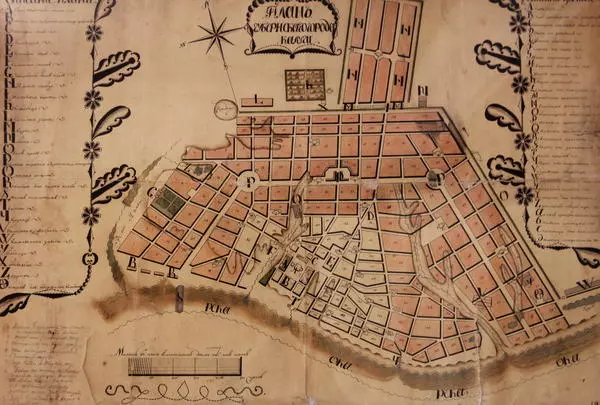The portrait of Natalya Naryshkina (September 1, 1651, Moscow, - February 4, 1694, Moscow), the second spouse of Tsar Alexis I of Russia, dates back to the end of the 17th century. It represents a secular image typical for that time, called ‘parsuna’ (from the Latin ‘person’ - personality). Old traditions of icon painting and pictorial techniques of European art were combined in parsuna. Following the example of secular depictions of Europe, the portrait of Naryshkina is painted using the technique of oil painting, although the manner of execution in many respects resembles the ‘liveliness’ of the faces of 17th century iconography.
The portrait of Natalya Naryshkina was created at a time when a woman’s portrait remained a rare phenomenon. The only possible reason to depict the image was matchmaking or a wedding for the princess, and death for tsarina. Such a posthumous portrait or “image in the assumption” was placed in home galleries in memory of the deceased.
Judging by the author’s signature on the back of the canvas, the work was created at the very end of 17th century by Piotor Nikitin, the icon painter of the Kremlin Armoury. Nikitin was guided by the posthumous image of the same model already painted several years earlier. The canvas was created within nine days after the death of Naryshkina and was considered to be her most authentic image.
Despite this fact, the image presented in the portrait has little in common with the real transmission of external feature. She is depicted in the traditional pose with her arms folded on her chest, characterizing ‘female decency’. The clothes that cover the figure look baggy, without natural folds, and the face is painted in a way that it is difficult for the viewer to catch what she actually looked like.
This portrait is known in several versions. The image of Peter the Great’s mother was popular and was spread in several copies at the end of 17th century. It is believed that the Taganrog Art Museum has the only signed and dated version of Natalya Naryshkina’s portrait.
The portrait of Natalya Naryshkina was created at a time when a woman’s portrait remained a rare phenomenon. The only possible reason to depict the image was matchmaking or a wedding for the princess, and death for tsarina. Such a posthumous portrait or “image in the assumption” was placed in home galleries in memory of the deceased.
Judging by the author’s signature on the back of the canvas, the work was created at the very end of 17th century by Piotor Nikitin, the icon painter of the Kremlin Armoury. Nikitin was guided by the posthumous image of the same model already painted several years earlier. The canvas was created within nine days after the death of Naryshkina and was considered to be her most authentic image.
Despite this fact, the image presented in the portrait has little in common with the real transmission of external feature. She is depicted in the traditional pose with her arms folded on her chest, characterizing ‘female decency’. The clothes that cover the figure look baggy, without natural folds, and the face is painted in a way that it is difficult for the viewer to catch what she actually looked like.
This portrait is known in several versions. The image of Peter the Great’s mother was popular and was spread in several copies at the end of 17th century. It is believed that the Taganrog Art Museum has the only signed and dated version of Natalya Naryshkina’s portrait.



